As currency is used and passed along, it sometimes becomes damaged. That damage can range from simple tears and wrinkles on paper currency, to more severe damage like burn marks, water damage, or chemical contamination. Sometimes currency is damaged by rodents, insects, or natural deterioration from burying money in the ground.X Most countries have some official procedure in place for replacing damaged or contaminated money, although that procedure may vary depending on the type of currency being replaced.X In the United States, the Department of the Treasury is the agency responsible for replacing damaged currency, and this is done as a free service to all lawful holders of currency.X If you receive damaged currency, or if your currency becomes damaged, knowing how to have that money replaced can help ensure you do not suffer any losses.
StepsPart 1Part 1 of 3:Learning if Your Money Qualifies for Replacement
1Assess the damage. If your money has suffered minor damage but is still legible and usable, you should use that currency as is. If it is damaged but not mutilated and you do not want to use that currency for any reason, you can exchange that money at your local bank.XMoney that has been mutilated or extensively damaged beyond repair or use should be submitted to the US Bureau of Engraving and Printing or the US Mint.XDo not falsify your claim or intentionally damage currency. Both are federal crimes that are taken very seriously by the U.S. government.X
2Measure what is left. In the United States, you must submit more than half (over 50 percent) of the paper bill intact. This is in part to prevent people from ripping money in half and replacing both halves. The only exception to this requirement is if less than 50 percent of the bill is intact but there is sufficient supporting evidence (such as burn marks) that the remainder of the bill has been destroyed.XIn addition to submitting the sufficient remains of a legible banknote, you must provide some remnant of the bill’s security features.XSecurity features may include the security ribbon woven into the bill, the security thread that runs vertically to the left of the portrait, watermarks, or color-shifting ink.XThe banknote’s value must be identifiable so that the treasury can determine how much money to reimburse you for, if your claim is determined to be valid.X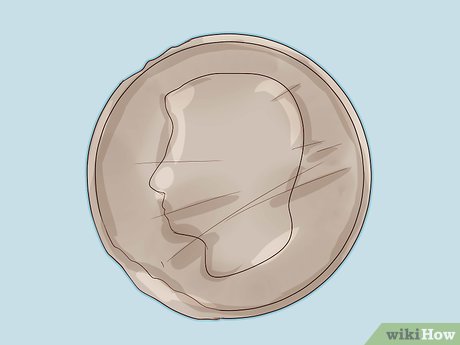
3Evaluate coins. Unlike paper banknotes, the Bureau of Engraving and Printing does not replace damaged coins. Coins that are severely damaged, such as coins that have been melted or fused together, can be sent to the US Mint for evaluation. The US Mint will then determine the best course of action.XPart 2Part 2 of 3:Packaging Damaged Currency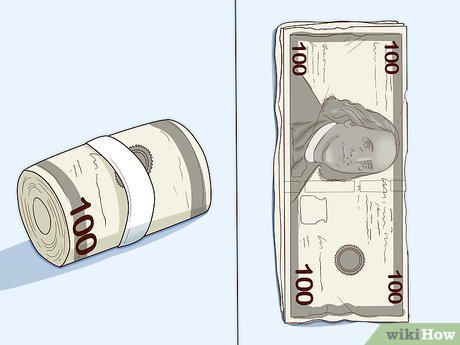
1Try to preserve the money. Even though the money has been damaged, it may become even more damaged by improper handling. How you handle the money as you prepare to pack and ship it may help preserve it, ensuring that you get the equivalent amount of money back.XIf the currency was rolled up when it was mutilated, do not attempt to straighten it out. If it was flat, do not attempt to roll, fold, tape, or glue it.XAltering the money in any way could further damage the currency, but may also count as altering/defacing money, which is against the law.X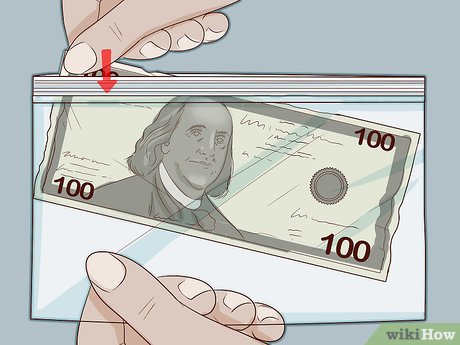
2Package currency carefully. How you package the currency may be the difference between getting money back and suffering financial losses. Package the currency in a way that will prevent any further damage and ensure a safe delivery.XIf the currency is brittle or may fall apart, pack the tattered money in a plastic sandwich bag with cotton to help insulate it and keep it in place.XDo not ship coins and paper currency together. The two forms of currency must be sent to separate offices, and packing coins with damaged paper money could cause further damage to the tattered banknote.X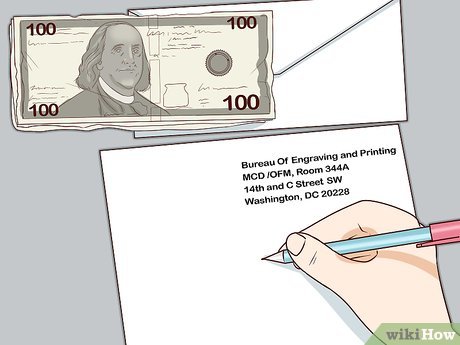
3Compose a letter of explanation. Once you’ve carefully packed and preserved the damaged currency, you’ll need to write a letter to include with your money. The letter should be legible, and typed if at all possible.X The letter should include:the original value of the currencyXyour name and current contact informationXa thorough explanation of how the money became damagedXyour current bank account and routing number (the bank must operate within the United States)Xyour current mailing address and any relevant instructions, if you want the money to come as a mailed checkXPart 3Part 3 of 3:Submitting Your Currency and Receiving Payment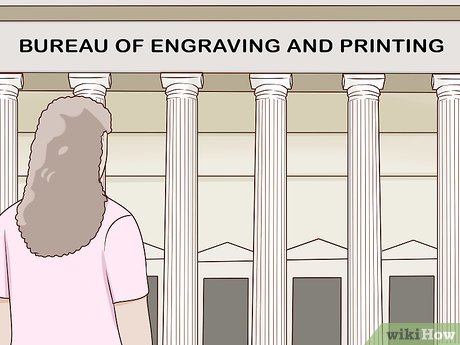
1Deliver currency in person. If you live in or near Washington, D.C., you can deliver the damaged currency in person to the Bureau of Engraving and Printing. The Bureau accepts personal deliveries of damaged or mutilated currency between the hours of 8:00 am and 11:30 am, and between 12:30 pm and 2:00 pm.X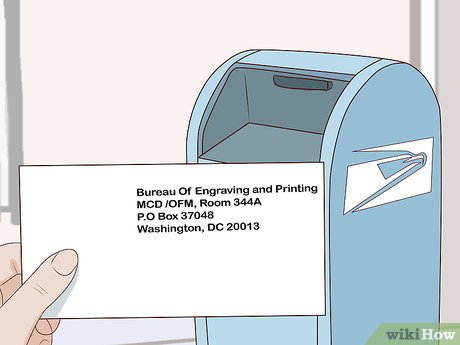
2Mail your currency. If you do not live in Washington, D.C., or are otherwise incapable of personally delivering damaged currency, you can send the currency by mail through the US Postal Service. Send all damaged currency through Registered Mail, with return receipt requested. You may also wish to purchase insurance on the package to ensure that your losses are covered if the package becomes lost or damaged.XDamaged paper currency should be addressed to the US Bureau of Engraving & Printing, MCD/OFM Room 344A, P.O. Box 37048 – Washington, DC 20013.XMutilated coins can be sent for evaluation to the U.S. Mint. Packages containing mutilated coins should be addressed to the Superintendent of the U.S. Mint, Attn.: Mutilated Coins, P.O. Box 400 – Philadelphia, PA 19105.X
3Wait for your claim to be processed. Once you’ve submitted your damaged currency to the proper office, you’ll have to wait for the claim to be processed. Each case is reviewed by a qualified professional to determine the extent of damage, confirm the banknote’s value, and assess the validity of each claim.XClaims can take anywhere from six months to 36 months to process. The evaluation process depends heavily on the condition of the money, the extent of damage, and the conditions under which it was damaged.XThe Director of the Bureau of Engraving and Printing makes the final decision on all damaged currency claims.XTo check the status of your claim at any time, you can call the Bureau of Engraving and Printing toll-free at 866-575-2361, or email the office at [email protected]








